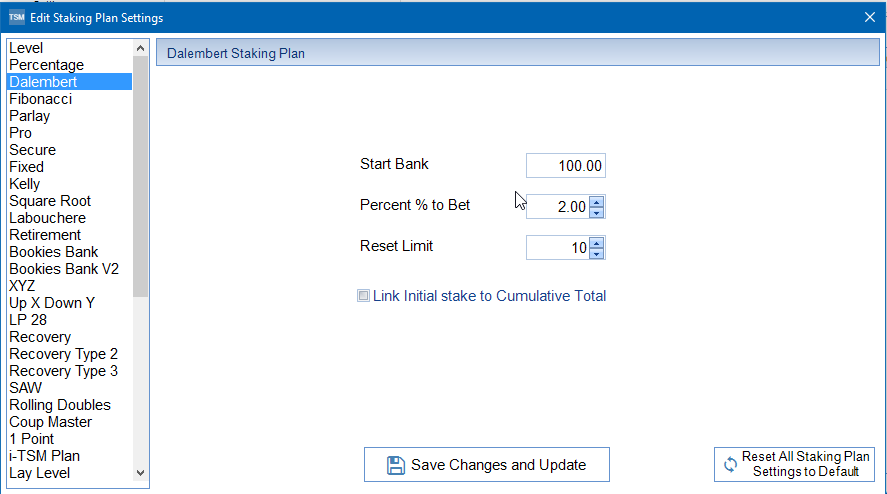D'alembert Staking Plan
The D’alembert Staking Plan, which is sometimes known as the Pyramid System, was devised by the French mathematician Jean Le Rond D’alembert (born 1717) and subsequently took his name D’alembert for obvious reasons.
The D’alembert theory on the ‘Law of Equilibrium’, supposes a balance of successes and failures over a long series of specific events.
The D’alembert Staking Plan requires you to increase your stake by one unit after a loss and decrease your stake by one unit after a win. The intention of the D’alembert staking plan is to end up at the beginning of the sequence but each time making at least one unit profit.
In an attempt to simplify the D’alembert process the following example once again assumes level stakes and odds of 2 (even odds) :
- On the first bet you play £10 win, bet £10 – if you lose, bet £20
- if you win at £20, next bet £10 – if you lose, bet £30
- if you win at £30, next bet £20 – if you lose, bet £40
- if you win at £40, next bet £30 – if you lose, bet £50
- if you win at £50, next bet £40 – if you lose, bet £60
- if you win at £60, next bet £50 – if you lose, bet £70 and so on.
Potentially, the D’alambert Staking Plan could require infinite stakes, so limits need to be set other wise D’alambert could see you bankrupt pretty quickly. In TSM there is a further option that allows you to increase your start stake at the beginning of a new sequence relative to the cumulative total of the betting bank.

